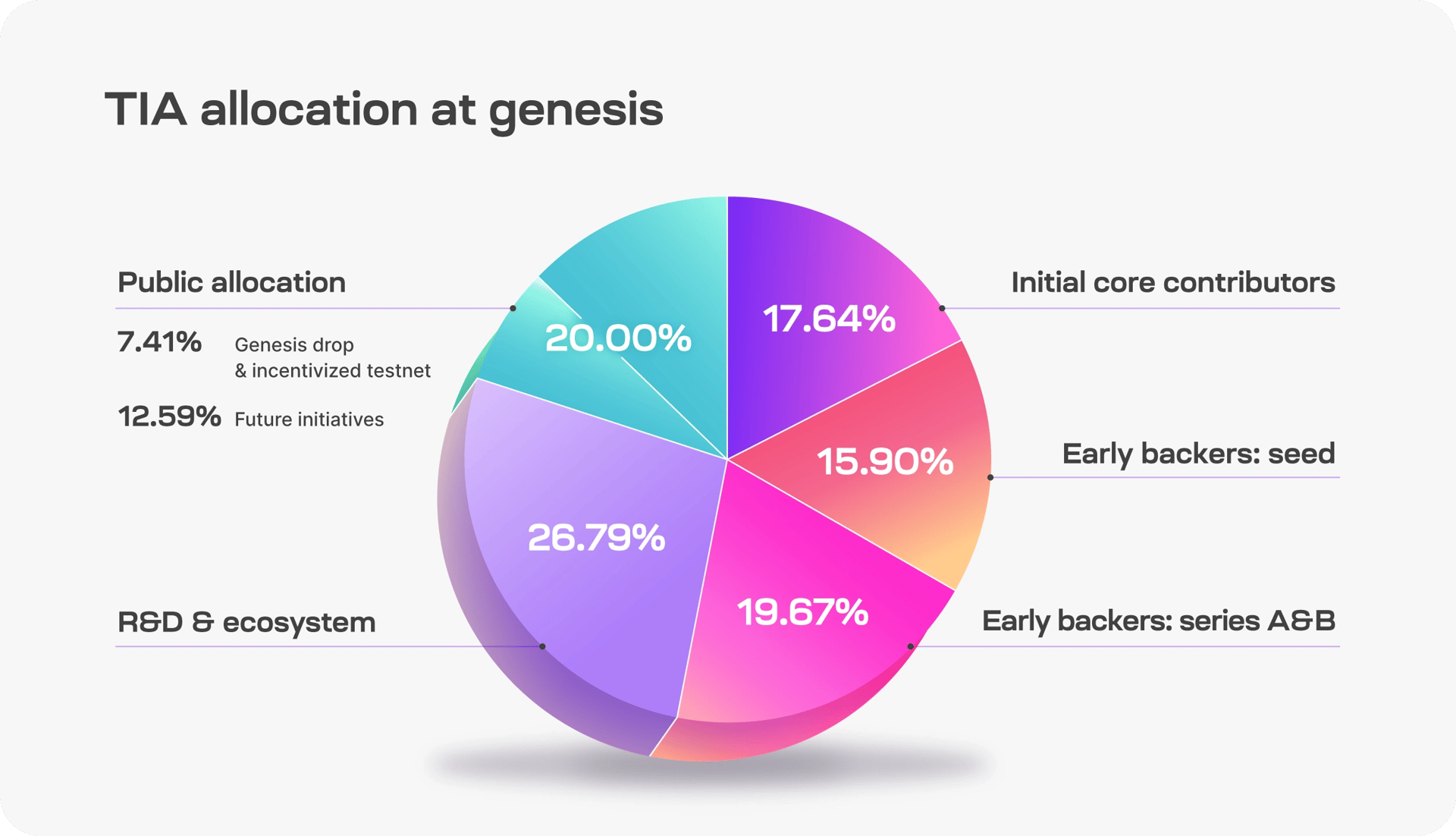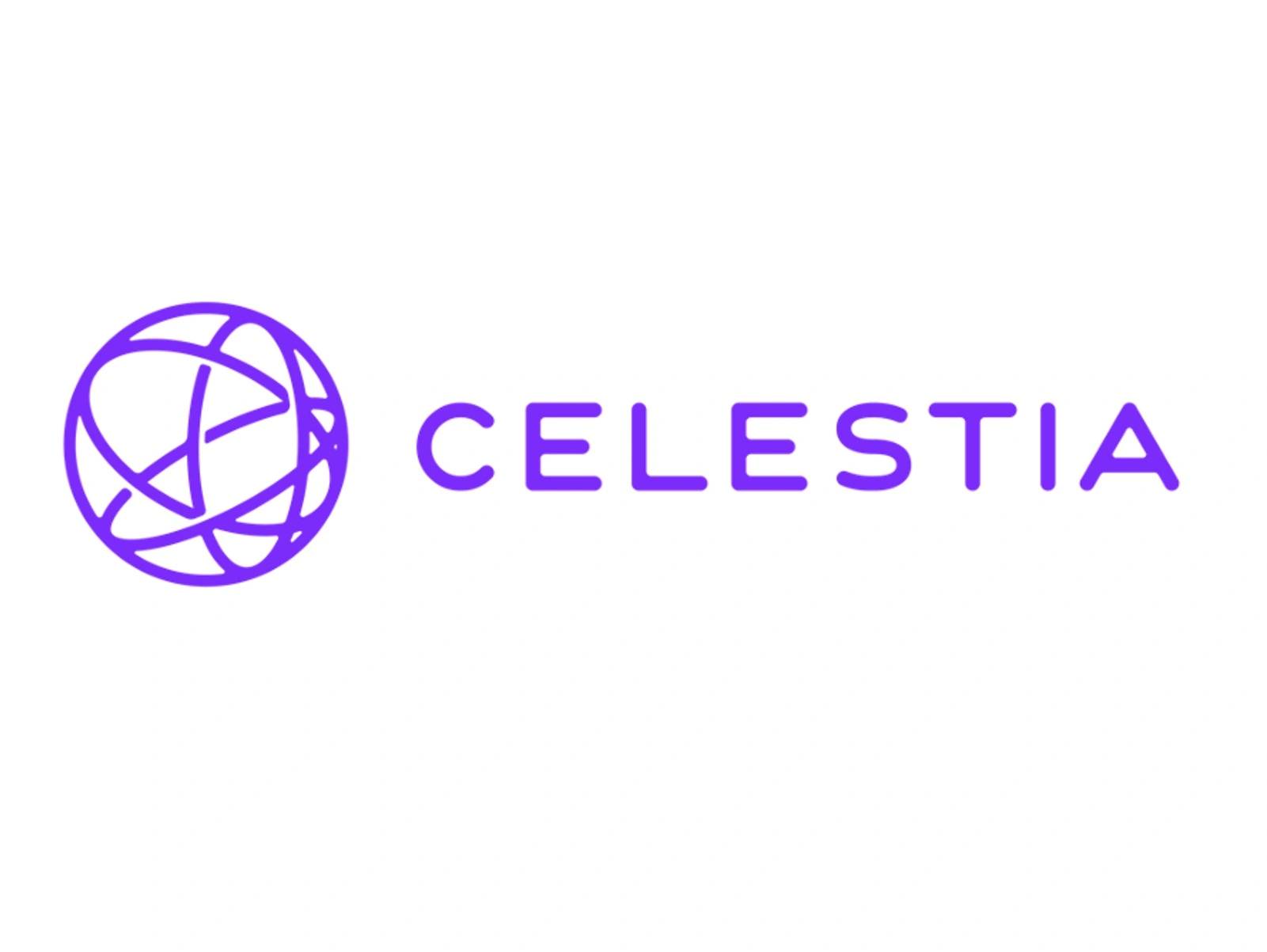Subscribe to wiki
Share wiki
Bookmark
Celestia
The Agent Tokenization Platform (ATP):Build autonomous agents with the Agent Development Kit (ADK)
Celestia
Celestia is a modular data availability network designed to scale securely with increasing users, allowing for the easy deployment of personalized blockchains. It facilitates the creation of scalable blockchain architectures, particularly modular blockchains, by separating execution from consensus and introducing a new element called data availability sampling. Mustafa Al-Bassam and Ismail Khoffi founded Celestia. [1] [2]
Overview
Celestia is a modular data availability network that separates consensus from execution to improve scalability and flexibility. It focuses solely on ordering transactions and ensuring data availability, allowing other blockchains to handle execution independently. Using data availability sampling, Celestia enables lightweight nodes to verify data by checking only a small portion, reducing resource demands. As more nodes join and perform sampling, the network can handle larger blocks without increasing verification costs, supporting the growth of modular blockchains. [2] [11]
History
Celestia originated from Mustafa Al-Bassam’s 2019 whitepaper called LazyLedger, which proposed a ledger focused solely on data availability without handling computation or execution. To develop this idea into a project, Al-Bassam assembled a team that included co-founders Ismail Khoffi, a Cosmos ecosystem developer, and John Adler, experienced with optimistic rollup technology. The project was rebranded as Celestia in 2021, and its mainnet launched on October 31, 2023.
Following its launch, Celestia gained support from major crypto firms like Bain Capital Crypto, Coinbase Ventures, and Jump Crypto. Its native token, TIA, saw significant growth, increasing by 500% by mid-December 2023. The project partnered with Polygon Labs and Optimism Labs to integrate Celestia’s data availability layer into their rollup solutions. In February 2024, Celestia also contributed to the Arbitrum Orbit protocol, enabling developers to use Celestia alongside Arbitrum AnyTrust for rollup data availability. [12]
Data Availability Layer (DA)
Celestia’s data availability (DA) layer lets execution and settlement layers independently verify whether transaction data is accessible, without relying on centralized trust. It introduces a modular approach by separating data availability from execution, enabling more scalable blockchain structures. This is achieved using two key features: data availability sampling (DAS), which allows light nodes to confirm data availability by checking small data samples instead of full blocks, and Namespaced Merkle Trees (NMTs), which organize data into namespaces so applications can retrieve only the segments relevant to them.
The DA layer operates as a proof-of-stake blockchain called celestia-app, built with the Cosmos SDK. It runs on Celestia-core, a customized version of the Tendermint consensus protocol. Modifications include support for two-dimensional Reed-Solomon erasure coding and NMTs, replacing Tendermint’s default Merkle tree to enable selective data access. Celestia-core connects to the application layer via ABCI++, an upgraded interface for blockchain applications. The Celestia app manages staking and governance but does not process or store the block data. It helps distribute it, maintaining a data-agnostic role. [4]
Data Availability Sampling (DAS)
Celestia uses Data Availability Sampling (DAS) to allow light nodes to verify block data without downloading the entire dataset. To enable this, Celestia applies a two-dimensional Reed-Solomon encoding method. Block data is first divided into a k×k matrix of chunks, then expanded into a 2k×2k matrix using parity data generated through multiple encoding applications. Merkle roots are calculated for each row and column (4k in total), and the Merkle root of these roots becomes the block’s data commitment in the header. [4]
Scalability
DAS improves scalability by enabling light nodes with limited resources to sample only a small portion of block data. As more light nodes participate, the total capacity to download and store data increases. This approach allows the network to support larger blocks without overburdening individual nodes. However, Celestia light nodes must still download the 4k intermediate Merkle roots to validate block headers. For block data of size n² bytes, each light node downloads O(n) bytes, which means improvements in light node bandwidth lead to a quadratic increase in throughput for the data availability layer. [4]
Fraud Proofs of Incorrectly Extended Data
Celestia's use of two-dimensional Reed-Solomon encoding offers advantages over standard one-dimensional encoding. In the standard method, data is split into k chunks and extended with k parity chunks, with a Merkle root commitment for the 2k chunks. This method reduces validation data size but is more susceptible to block producers introducing invalid extended data. If this happens, light nodes may be unable to recover the original data, even if they collect enough unique samples.
Celestia mitigates this risk using fraud proofs, which allow light nodes to detect and reject blocks with improperly extended data. These proofs involve reconstructing and verifying portions of the encoded data. While the standard method requires downloading the full n² bytes of data for verification, the two-dimensional approach only requires O(n) bytes, since verifying a single row or column of the matrix is enough to detect inconsistencies. [4]
Namespaced Merkle Trees (NMTs)
Namespaced Merkle Trees (NMTs) are used in Celestia to organize block data by application, or namespace. Each application, such as a rollup, is assigned its namespace, allowing it to download only the data relevant to it and ignore unrelated information. NMTs modify standard Merkle trees by ordering leaves according to their namespace identifiers and altering the hash function so that each node contains the namespace range of its descendants. This structure allows applications to verify their data's inclusion and completeness. The DA layer must provide the relevant data shares and proof nodes when requesting data for a specific namespace. If the data is incomplete, the application can detect this by checking the namespace ranges in the proof nodes. [4]
Celestia Modular Meetup Program
The Celestia Modular Meetup Program is designed to assist meetup organizers by offering education and support, promoting collaboration within the Web3 ecosystem.
Organizers receive support, including sample workshops, venue-securing guidance, and marketing assistance. They also gain access to a speaker list, allowing them to invite speakers from Celestia Labs and the modular ecosystem for talks at their meetups, whether in-person or virtual. [5] [6]
Modular Fellows
The Modular Fellows program is designed to assist modular builders in developing scalable and sovereign blockchain networks. During the three-month program, participants receive engineering support, mentorship, and a monthly stipend of $3,000 to work on their projects of choice. After the program, ongoing support is provided to Fellows, including assistance with fundraising and access to grants.
Participants accomplish a project milestone each month, concluding with a presentation on demo day. Support is offered through weekly office hours, lessons and tutorials, participant demos, communication, and a monthly stipend. Mentors include Wei Dai, Can Gurel, Eric Wall, Eli Krenzke, Zaki Manian, Marko Baricevic, Morgan Beller, John Adler, Mustafa Al-Bassam, Ismail Khoffi, and Evan Forbes. [7]
Modular Summit
Modular Summit is a two-day event where builders can learn about modular blockchain, hosted by Celestia Labs. The 2023 edition took place in Paris from July 21 to 22. Speakers included Mustafa AI-Bassam, Sandeep Nailwal, Vitalik Buterin, Chris Goes, Georgios Konstantopoulos, and Tina Zhen. [8]
Celestia Foundation
The Celestia Foundation, a non-profit organization situated in Liechtenstein, has the purpose of providing guidance to the Celestia ecosystem and maintaining its values. The Foundation Council governs the Celestia Foundation. [9]
Funding
Celestia’s Series A and B funding rounds took place in October 2022. Led by Bain Capital Crypto and Polychain Capital, the project raised $55 million, resulting in a valuation of $1 billion. Noteworthy participants in the funding included Coinbase Ventures, Delphi Digital, Placeholder, Jump Crypto, and Galaxy, among others. [10]
TIA
The TIA token is Celestia’s native cryptocurrency, mainly used for transaction fees and governance participation. It was launched with an initial supply of one billion tokens, with 7% distributed to early users through an airdrop. The token is inflationary, increasing its supply by about 8% annually, though this rate is planned to decline over time.
TIA functions within Celestia’s proof-of-stake network, allowing holders to stake tokens to support network security and governance. Developers use TIA to pay for data availability services and as gas fees when deploying Celestia-based rollups. [12] [13]
Tokenomics

TIA has a total supply of 1B tokens and has the following allocation: [14]
- R&D/Ecosystem: 26.79%
- Public Allocation: 20%
- Series A&B Early Backers: 19.67%
- Initial Core Contributors: 17.64%
- Seed Early Backers: 15.90%
See something wrong?
The Agent Tokenization Platform (ATP):Build autonomous agents with the Agent Development Kit (ADK)
